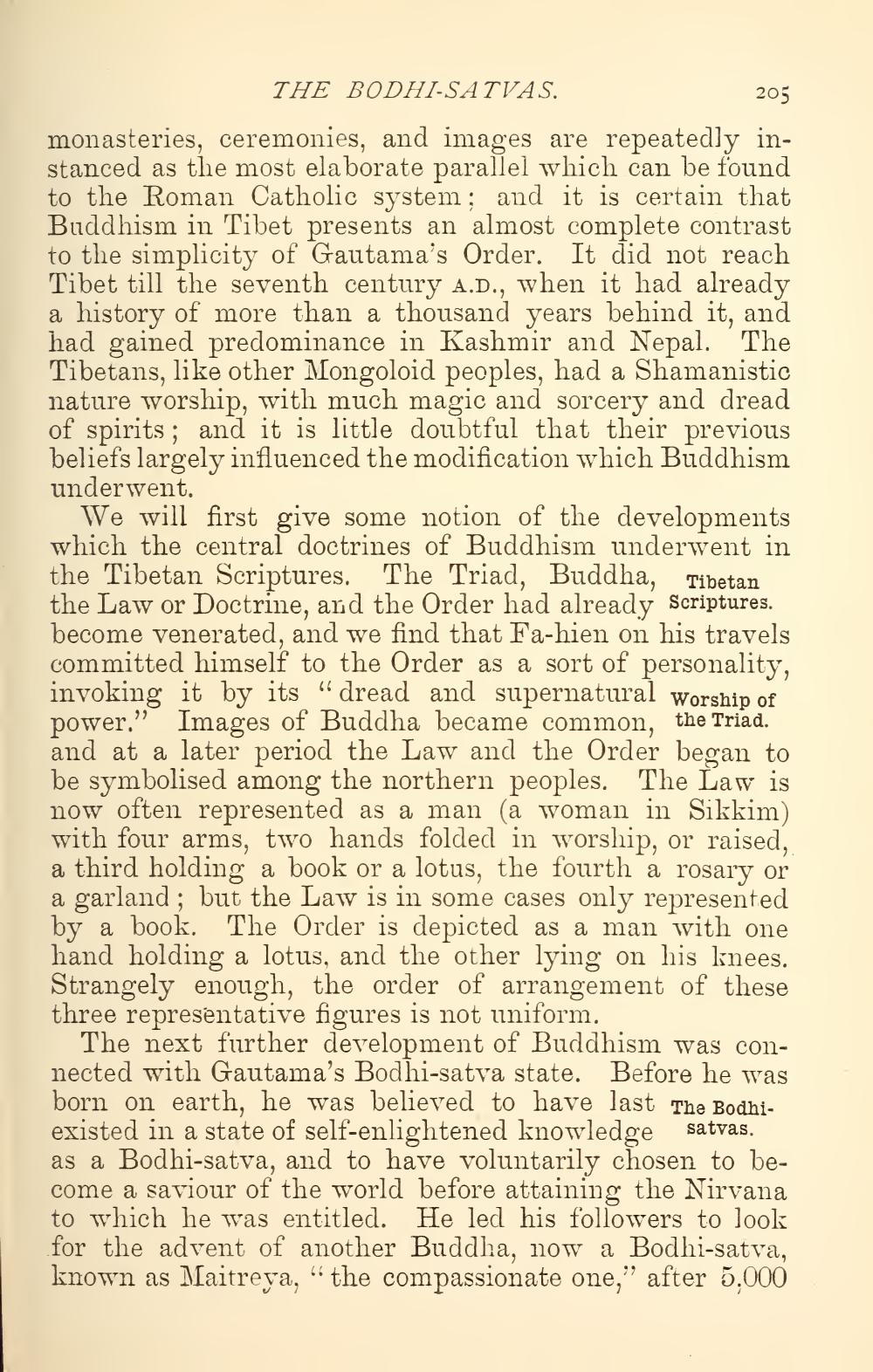________________
THE BODHI-SATVAS.
205 monasteries, ceremonies, and images are repeatedly instanced as the most elaborate parallel which can be found to the Roman Catholic system; and it is certain that Buddhism in Tibet presents an almost complete contrast to the simplicity of Gautama's Order. It did not reach Tibet till the seventh century A.D., when it had already a history of more than a thousand years behind it, and had gained predominance in Kashmir and Nepal. The Tibetans, like other Mongoloid peoples, had a Shamanistic nature worship, with much magic and sorcery and dread of spirits; and it is little doubtful that their previous beliefs largely influenced the modification which Buddhism underwent.
We will first give some notion of the developments which the central doctrines of Buddhism underwent in the Tibetan Scriptures. The Triad, Buddha, Tibetan the Law or Doctrine, and the Order had already Scriptures. become venerated, and we find that Fa-hien on his travels committed himself to the Order as a sort of personality, invoking it by its "dread and supernatural Worship of power." Images of Buddha became common, the Triad. and at a later period the Law and the Order began to be symbolised among the northern peoples. The Law is now often represented as a man (a woman in Sikkim) with four arms, two hands folded in worship, or raised, a third holding a book or a lotus, the fourth a rosary or a garland; but the Law is in some cases only represented by a book. The Order is depicted as a man with one hand holding a lotus, and the other lying on his knees. Strangely enough, the order of arrangement of these three representative figures is not uniform.
The next further development of Buddhism was connected with Gautama's Bodhi-satva state. Before he was born on earth, he was believed to have last The Bodhiexisted in a state of self-enlightened knowledge satvas. as a Bodhi-satva, and to have voluntarily chosen to become a saviour of the world before attaining the Nirvana to which he was entitled. He led his followers to look for the advent of another Buddha, now a Bodhi-satva, known as Maitreya, " the compassionate one," after 5,000




